Once the dust had settled, I had hoped to come up with some conclusions about the Morphets bus and train extravaganza of last week. But the more I look at the results, the more my brain becomes addled. This isn’t just the result of the scale of it all, although that hasn’t got any better, it’s also because I’m not entirely sure there are that many conclusions to be drawn.
So let’s start with some simple thoughts. Expensive posters sold for lots of money.
This went for £2400, which is pretty much what I’ve seen it go for every time.
People still like to buy pictures of trains. It seems that they also like to buy pictures of motorbikes too.
Any other reason for that fetching £300 rather escapes me.
People like pictures which look like real things in general. So this Riley fetched £500,
while the Amstutz of the same subject only went for £240. (Apparently it is possible to go and stay on restored camping coaches even today. I must investigate further.)
Most of all though, what people like to buy most of all are nice pictures of landscapes which look a bit like proper art. So posters like these,
are highly desirable and go for £600 and £750 respectively.
This rule seems to work for bus posters too – this Lander reached a very respectable £340.
Although even I can see the appeal of that one.
But as I mentioned before, things which looked less like fields and more like design didn’t do so well. The Paddens, Coopers and their like didn’t reach anything like the prices I expected. There were a few exceptions to this which are worth taking a look at.
Firstly, kitschy 50s graphics seemed to be selling well – this Bromfield fetched £440.
While at a lower level, this rather nice Studio Seven pair fetched £70, more than most coach posters were managing to do.
Even more odd was that, in a complete reversal of the normal situation, artworks fetched more than the original posters. Royston Cooper’s airport artwork went for £320,
when you could have picked up the poster, as one of a pair, for £38.
While this Daphne Padden ark-work sold for £240, more than any of her individual posters made. Go figure.
But there was one big exception to the rule that good design didn’t sell – although perhaps not quite so much of an exception considering that it is a picture of a field as well.
Tom Eckersley’s Lincolnshire reached £550. Two readers of this blog battled with us over it – we lost but it’s going to a good home over in Norfolk so I don’t mind. Not too much anyway.

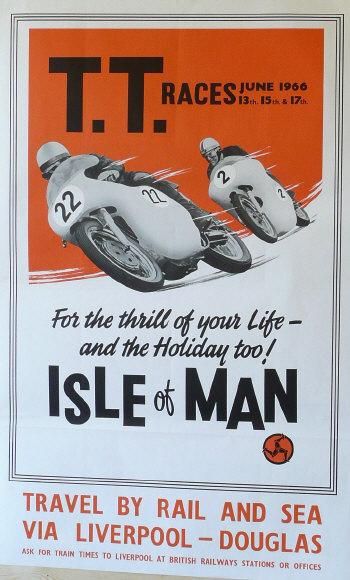
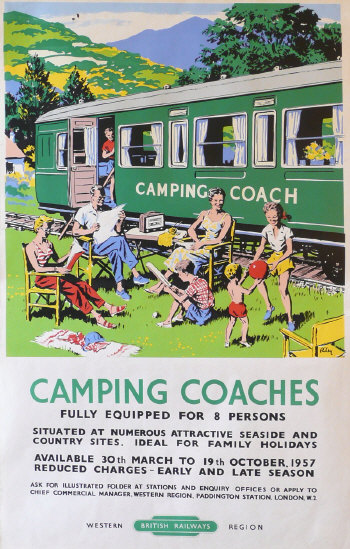
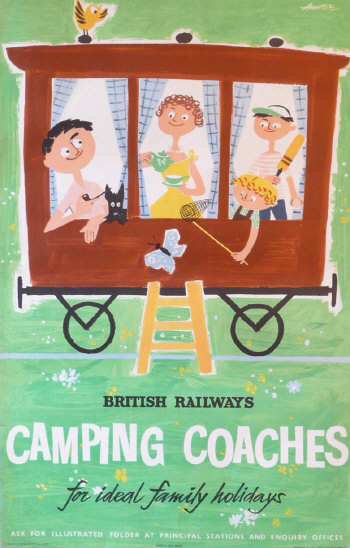



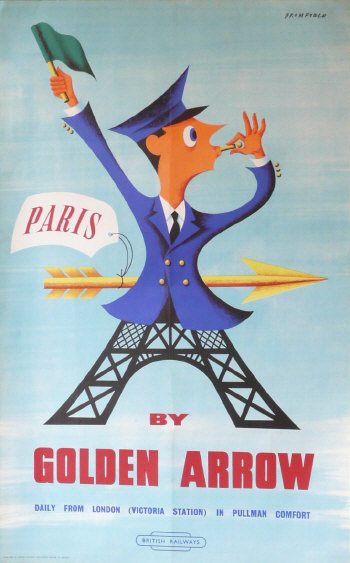
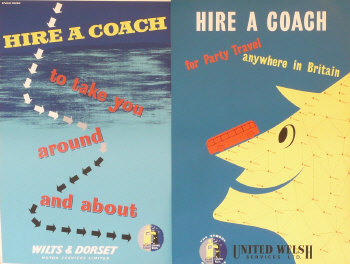

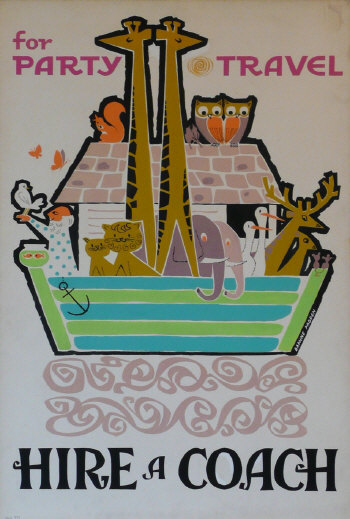

Relatively speaking, I thought the Southport poster was cheap. This appears quite regularly but usually gets between £4000 and £6000. Another copy in Part 1 fetched £4400. This one was condition C and looks as if it might have some substantial tears, though.
I am quite happy to be corrected on that one – I thought I saw it go for that at Onslows a while back, but I haven’t checked the condition. Thanks for that.
There are some converted railway carriages available in Dawlish Warren in Devon: http://www.dawlishwarren.info/railwaycarriages.php
I used to frequently pass them on the train to college in Exeter so be warned they are rather close to the tracks – but perhaps that just adds to the atmosphere as you (hopefully) sleep to the sounds of the trains running by.
Matt
Thanks for that – we are definitely going to do this one way or another! I think there are some in Yorkshire too, although I’m not sure whether they’re still working or not. Surely with all the retro, glamorous camping going on they have to come back into fashion!
The Morphets auctions were amazing and by and large most prices were below what the same posters would have made at Christie’s or Onslows. However what was amazing is the market absorbed all the posters without any detrimental effect. Nostalgia is big business and poster prices are holding up and are a good investment. I recently published an article about camping coaches in Best of British magazine using some posters and pictures not seen before. They we located all over Great Britain, with concentrations in Mid-Wales and the South-West.
Yes, it’s an interesting point, that the Morphets sales as a whole don’t seem to have dented the market – at least not judging by the Christies sale a few weeks ago.
It always bemuses me that the orginal artwork makes less than do the posters. Do you have any thoughts as to why? Is it because the type of person buying posters is not used to buying original artwork, and therefore prefers spending their money on what is much more of a commodity with a (relatively) liquid and clearly-priced market? (And the type of person buying original artwork probably is not buying originals of somewhat chocolate-boxy carriage prints?)
Great blog, by the way, thank you for your effort. (If you do respond, perhaps you would be kind enough to email me.)
That’s an interesting question, and not one to which I have a ready answer. I think one reason is simply that there is very little original artwork about in comparison to the posters, and so there a market just has not developed in it.
But another reason may well be that the artwork is actually not that great to look at. Certainly in the examples I have seen, the vast majority are a bit scrappy and over-painted, and less appealing than the posters. This is particularly true of posters which were designed for lithography as I think the designers knew that the lithographers would sort out all the little glitches and uneveness as they prepared it for print!
I would also imagine that in the case of a few designers with a more painterly style – I’m thinking particularly of someone like Terence Cuneo here – their artworks would probably fetch more.
But I have no proof of any of this, so I’d be really interested in anyone else’s thoughts!